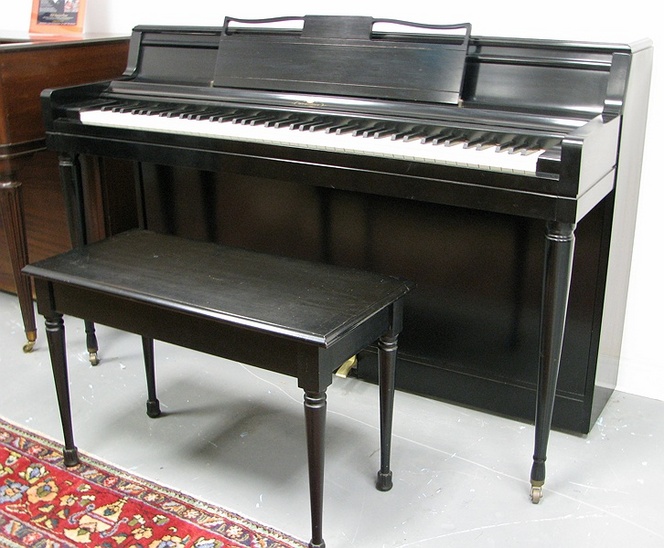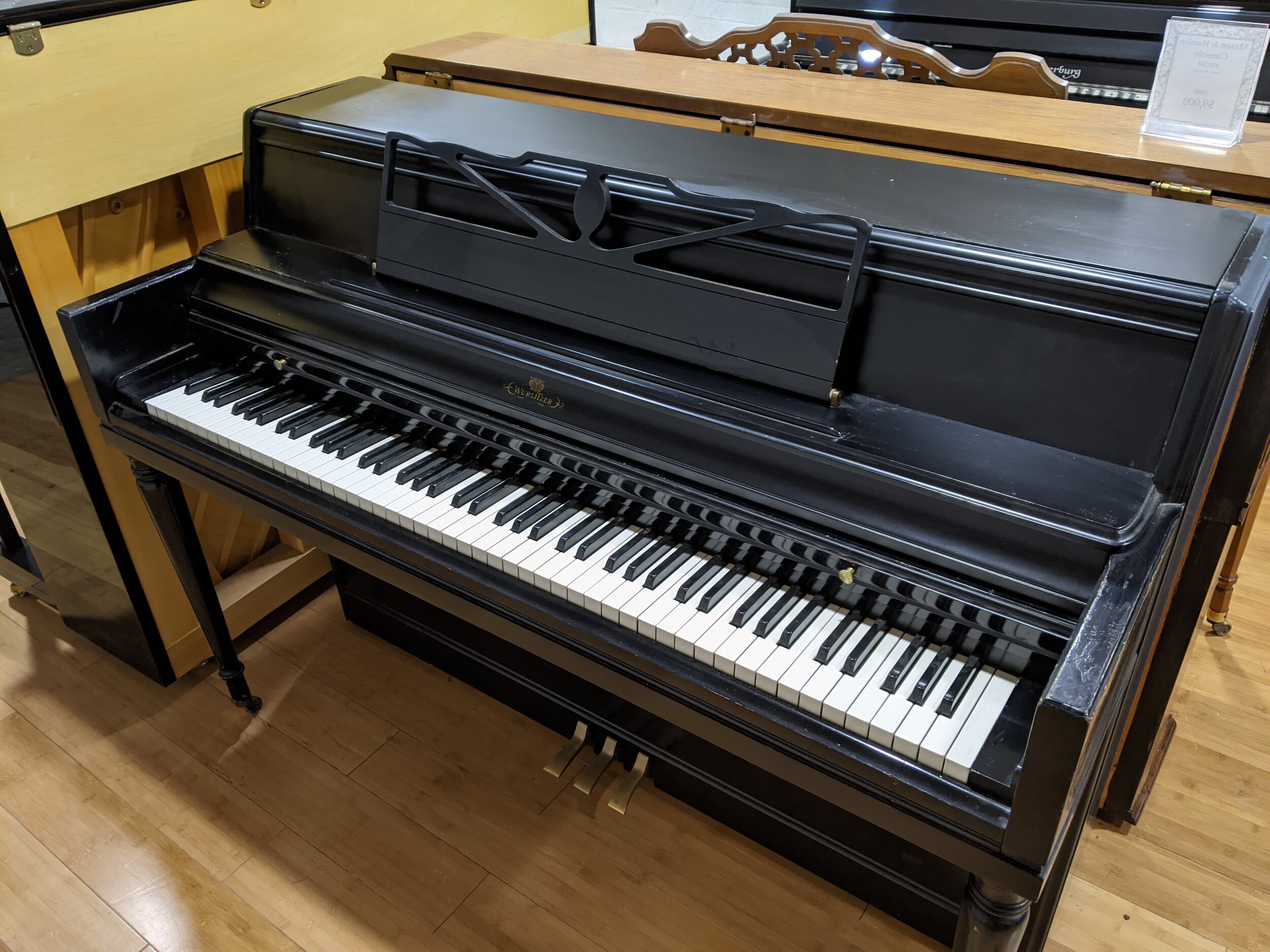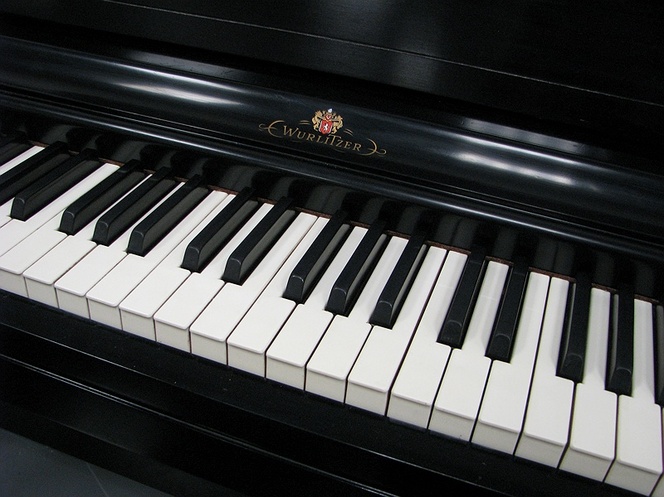

He leaped up without missing a beat and continued his solo on the Wurlitzer. As he played one measure on the crippled spinet, his eyebrows shot up and his mouth made an O of surprise. Erroll sat down at the spinet instead, indicating his preference for the "real" piano. Hampton motioned for him to come up and play, and Hamp's pianist got up from the Wurlitzer to make room for him. and some friends came in and took a table in front of the bandstand.

Hamp's pianist had pushed it aside and set up a little Wurlitzer electric piano that he carried with him on the road as a practice instrument. The hotel was trying a jazz policy in one of its restaurants, but had provided the band with a disgracefully out-of-tune spinet piano that had several broken keys. I dropped in at the Plaza Hotel one night to hear Lionel Hampton's band. As Bill Crow describes in his memoir, From Birdland to Broadway :
#Wurlitzer spinet piano finishes upgrade
Although some musicians were skeptical about the Wurlitzer's tone (note that this piano was released decades before the synth age: nothing at the time sounded quite like it), most considered it an upgrade to the usually neglected and out-of-tune backline spinet. It wasn't long before gigging musicians saw the appeal too. It was designed as an alternative to heavy, expensive spinet and upright pianos. The 112 was marketed towards parents, students, and home users. Even the transistor models of the 60s and 70s have their own sound: similar, but not exactly the same as their earlier counterparts.

There's just no plugin or emulator that compares to an authentic tube Wurlitzers. This gives it an exceptionally warm and lush tone. Like the 120 and 145, the 112 has a tube amplifier. Between its size, speckled paint, and midcentury lines, this is definitely a statement piece. A vintage keyboard is never going to fade into the wallpaper, but the 112 has a clear presence in a room. A console model of the electronic piano, introduced in 1957, met with immediate popularity.The 112 also has a unique silhouette: slightly deeper and taller than later Wurlitzers. Introduced in 1955, the sensational new Wurlitzer electronic piano has no strings or sound board, provides natural piano tone through means entirely electronic, weighs only sixty-eight pounds, carries like a suitcase by means of its handy porta-cover, is unaffected by changes in temperature or climatic conditions, has built in volume control, may be played “silently” with earphones plugged in, and offers the additional important advantage of modest cost. Noted for their perfection of performance and beauty of appearance, Wurlitzer pianos give enduring satisfaction and are a handsome addition to any setting. The complete line of Wurlitzer pianos offers a wide range of spinette, console, and studio-type designs, finished in a variety of fine woods, hand-rubbed to satin smoothness, and priced to suit any budget. A unique achievement in finishes is “Wurl-on,” highly resistant to heat, cold, dryness, and moisture as well as mars, scratches, and abrasions an attractive as well as durable and long-lasting finish. Through science, research, and ingenuity, Wurlitzer has developed such exclusive features as Tonecrafted Hammers, Pentagonal Sound Board, Augmented Sound Board, and many others to provide a greater volume of rich, resonant tone. Upon the design of this piano is based all modern piano production. In 1935, Wurlitzer introduced the tradition-breaking spinette piano, proving that a piano only thirty-nine inches high could replace the bulky instruments traditionally produced. Wurlitzer was also known for its pipe and theater organs.

Franz Rudolph Wurlitzer died in 1914, but the company continued and managed to survive the age of the gramophone by introducing the first automatic jukebox, the Wurlitzer Simplex. In 1880 Wurlitzer started to make pianos, and the company grew and became particularly well known for military and mechanical instruments. Four years later he opened a retail shop and expanded the distribution business across the US. El piano Wurlitzer es ampliamente recomendable.Įstablished in 1856 Wurlitzer set up a manufacturing plant in Cincinnati, Ohio, in 1861. Además de hacer pianos, Wurlitzer fue también un innovador de órganos, máquinas de discos, teclados eléctricos y máquinas expendedoras. Este pequeño piano vertical estaba dentro del rango de precios de la creciente clase media y podía caber prácticamente en cualquier lugar. Wurlitzer se convirtió en un nombre muy conocido en la producción de pianos en 1935, cuando se comenzó a fabricar el modelo espineta.


 0 kommentar(er)
0 kommentar(er)
